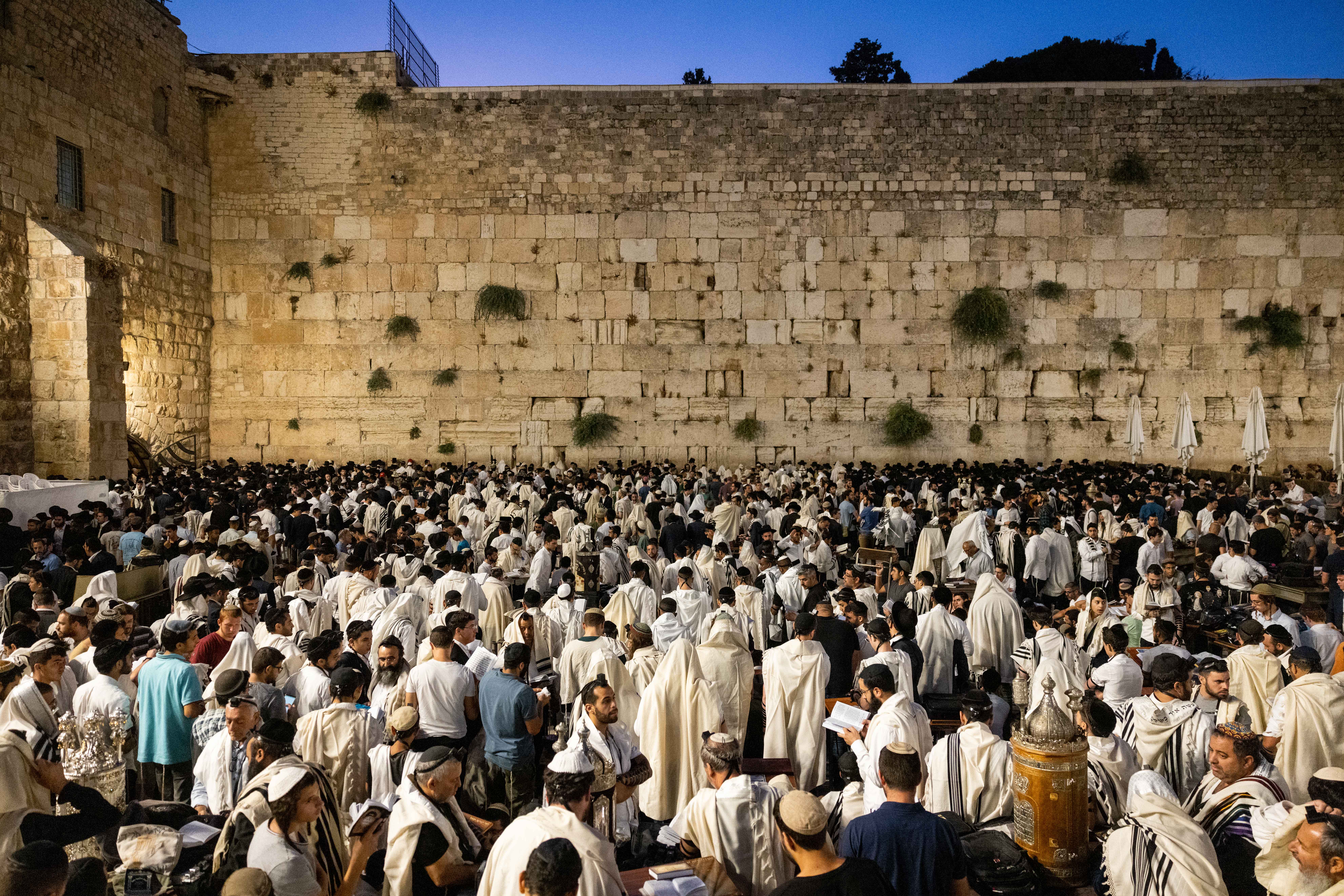Tisha B’av: Lessons from Destruction and Hope
9 B'av commemorates the destruction of the Second Temple in 70AD. As we mark the day, we face intense polarization within Israeli society and threats against our security from without. What lessons can we take from the story of the Temple's destruction that might serve us well today?

Photo by Chaim Goldberg/Flash90
These days are fraught with difficulty, anxiety, and uncertainty.
On the one hand, our strength is considerable, and our achievements are immense. We have our state, impressive cultural and economic accomplishments, gold and silver Olympic medals, a skilled military, and the unwavering support of the world’s greatest superpower. On the other hand, we find ourselves besieged by enemies from every direction, while within Israel, a profound internal storm is raging.
The polarization is deepening, bringing rising anger and hatred, as growing struggles intensify between sectors and groups. All of them hold the welfare of Israel as their foremost concern, yet their visions and paths for the nation diverge radically. Ten months of conflict have left us wounded and exhausted as violence increasingly seeps into the fabric of our communities.
In this context, today we mark the Ninth of Av, a day that historically served as a symbol and a dire warning against “baseless hatred” and civil war. What lessons can we draw from the story of the Second Temple’s destruction?
At the time of the destruction, the Kingdom of Judea was a prestigious province within the Roman Empire. The Temple in Jerusalem was the largest and most magnificent sacred complex in the world, and the wealth and influence of the Judean people were significant, sometimes even extending into the corridors of Roman power.
At the same time, the empire was experiencing profound internal upheavals, a brutal civil war, and political instability. It is no coincidence that 69 CE is known as the ‘Year of the Four Emperors,’ as four different emperors ruled in rapid succession. The zealots sought to exploit this instability to cast off the Roman yoke and restore Jewish sovereignty over their land.
However, even within the walls of Jerusalem, the polarization intensified. With the outbreak of the revolt, the Sadducees, the elite who managed the Temple, saw their status diminish. The populace perceived many of them as corrupt, disconnected, and aligned with the Roman oppressors. The zealots who led the revolt against the Romans did not hesitate to use violence, even against their fellow Jews. But within their ranks, violent power struggles broke out as factions turned against one another. They divided the city into fiefs and centers of control, waging war against each other.
Titus, the emperor’s son, fortified himself outside the city walls during this time. He ravaged the surrounding countryside and strengthened his army. While the walls of Jerusalem were formidable, Titus understood well that a nation divided from within would be easier to vanquish. And so, he waited. Josephus Flavius’ accounts from that time are still chilling today: an ongoing and bloody war, with the populace trapped between a hammer and an anvil, worn down mentally, physically, and morally. The civil war ultimately led to the zealots setting fire to the city’s food stores. This catastrophe caused widespread famine, leading to the fall of Jerusalem in 70 CE and the destruction of the Temple, which was the heart of the city.
But this is not the end of the story.
Rabban Yohanan Ben Zakkai, a wise and peace-seeking man, managed to escape Jerusalem’s besieged walls. After the Temple’s destruction, he established a center in Yavne, where he gathered the generation’s sages. There, they began to reinterpret the laws in ways that allowed the Jewish people to survive. Thanks to Rabban Yohanan Ben Zakkai and his colleagues, the Jewish people were not destroyed along with the Temple; instead, they discovered new strengths—the power of thought, creativity, and determination. Through these qualities, the Jews, against all odds, built rich and thriving communities, preserving an identity that, despite encompassing diverse interpretations and expressions in distant lands, has always maintained a core of shared partnership. This same sense of Jewish collectivity led Jews worldwide to reunite in the Land of Israel after two thousand years of exile, arguably the Jewish people’s most outstanding achievement, surpassing even the Temple itself.
Empires have ascended and declined. The Roman Empire fell, as did many others, but the Jewish people endured. Threats from within and without are likely the lot of any group that grows in strength, with varied currents and opinions. However, the Jewish peoples’ resilience and survival does do not lie in the might of arms but in the strength of intellect and wisdom, determination, and adaptability that enabled them to overcome threats and find new ways to thrive, against all odds.
Do we today have the ability to adopt the ways of the wise and peace-loving Yohanan ben Zakkai, to turn away from the path of anger, and chart a new course that preserves our union without seeking to impose one’s will on another by force?
We may need to reassess the historical figures we hold up as heroes from whom we derive our values. Perhaps the time has come to teach our children that not only must they be as brave as the Maccabees, but also as wise as Yohanan ben Zakkai.
Can we do this without facing the threat of a proverbial ‘third Temple’s’ destruction and take preventive measures? This year, more than ever, this is the question that the Ninth of Av places before us all.
